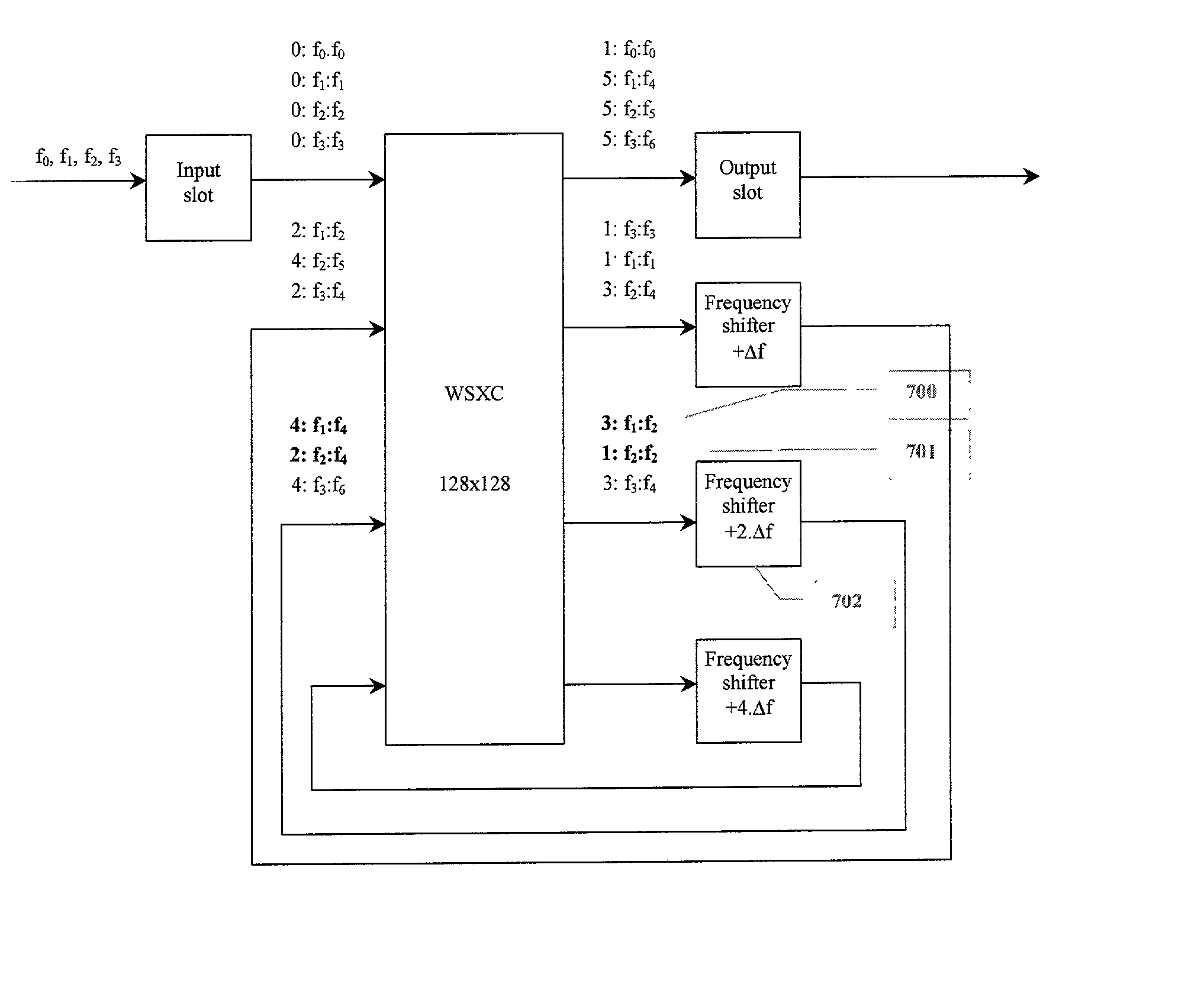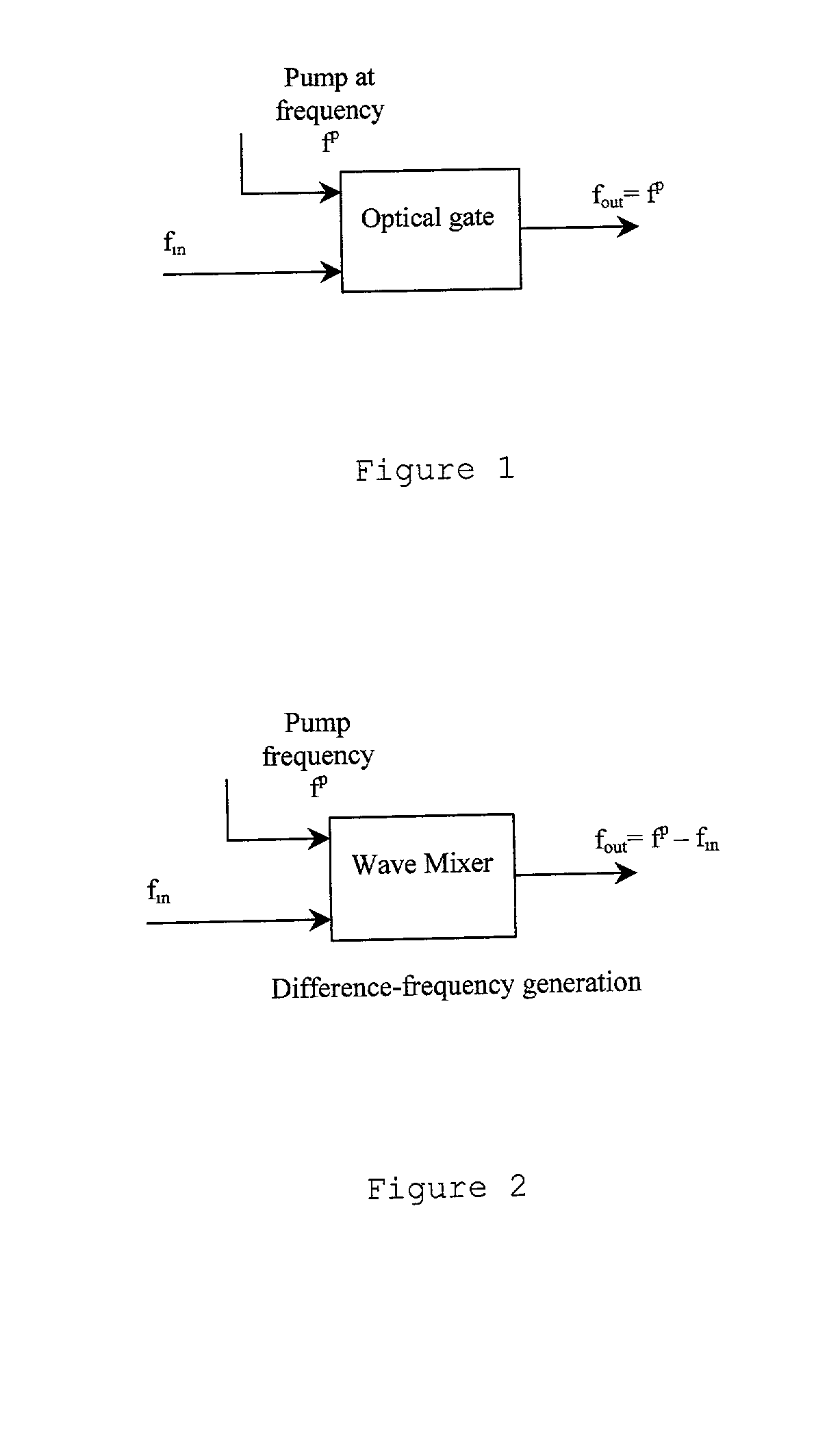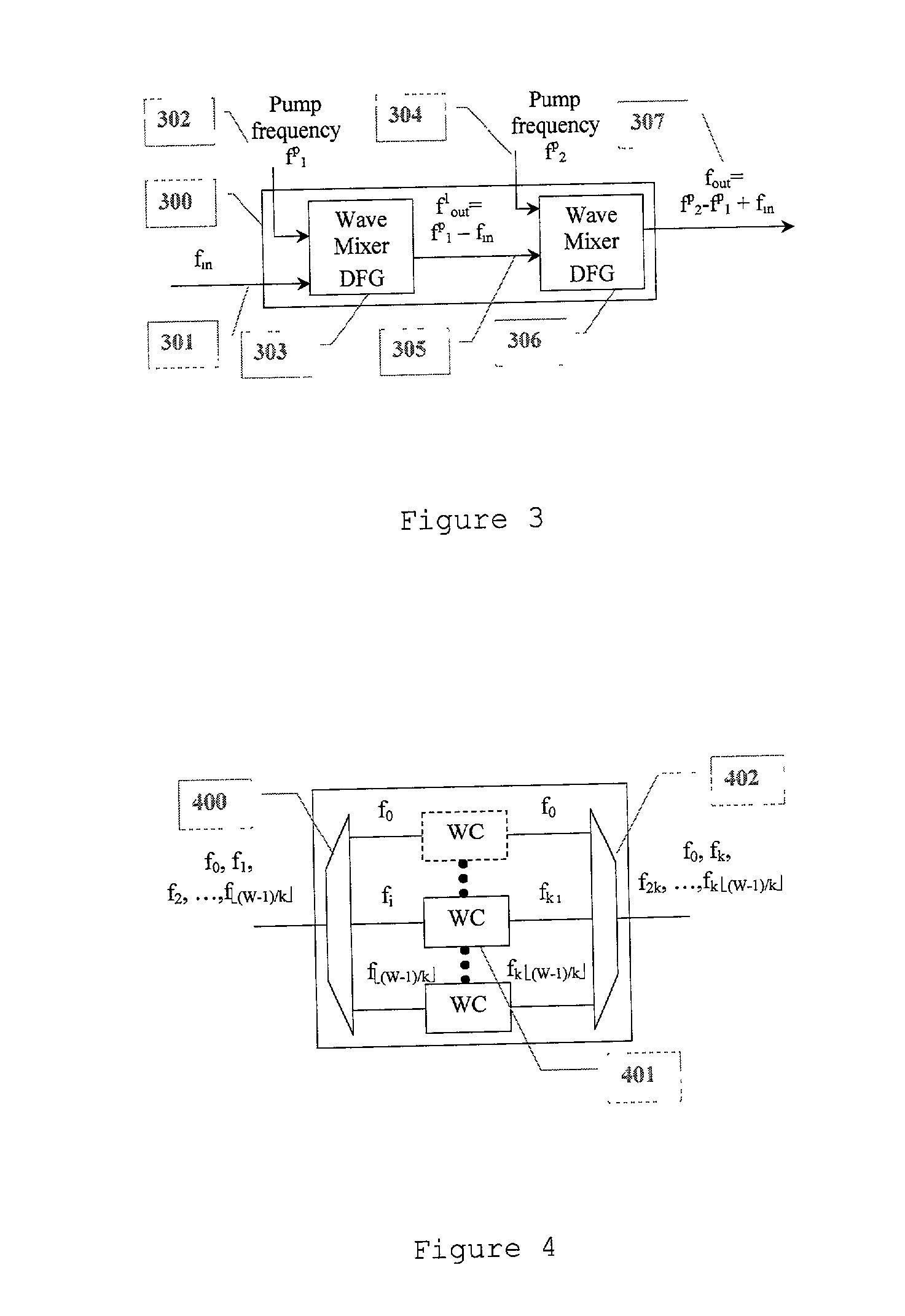Technique for optically converting wavelengths in a multi-wavelength system
a multi-wavelength system and optical conversion technology, applied in the field of optical conversion wavelengths in a multi-wavelength system, can solve the problems of insufficient bulk wavelength conversion ability, limited signal transparency of devices based on cross-gain modulation, and high cost of all-optical wavelength converters, so as to increase the number of up-converters and decrease the cost of down-converters
- Summary
- Abstract
- Description
- Claims
- Application Information
AI Technical Summary
Benefits of technology
Problems solved by technology
Method used
Image
Examples
Embodiment Construction
)
[0033] The present invention provides cost effective techniques to implement static frequency-mappings, in an all-optical manner, with wave-mixing converters. The main idea behind the present invention is to decompose the mapping of each frequency f to its image .GAMMA.(f), into a cascade of elementary frequency translations by amounts of the form .+-.2.sup.i..DELTA.f, where .DELTA.f is the frequency spacing between adjacent frequency channels. In other words, for some frequency f and the binary representation of 1 1 f ( ( f ) - f )
[0034] given by 2 ( l = 0 N - 1 2 lb l) ,
[0035] where b.sub.l.epsilon.{0,1}, the present invention comprises converting f into .GAMMA.(f) with a sequence of frequency translations by 2.sup.i..DELTA.f , where l=0,1, . . . , N-1. In a system with W=2.sup.N frequencies of the form f.sub.l=f.sub.0+i..DELTA.f, having the constraint that each input frequency is mapped to some other frequency of the available spectrum, the present invention approach reduces the...
PUM
 Login to View More
Login to View More Abstract
Description
Claims
Application Information
 Login to View More
Login to View More - R&D
- Intellectual Property
- Life Sciences
- Materials
- Tech Scout
- Unparalleled Data Quality
- Higher Quality Content
- 60% Fewer Hallucinations
Browse by: Latest US Patents, China's latest patents, Technical Efficacy Thesaurus, Application Domain, Technology Topic, Popular Technical Reports.
© 2025 PatSnap. All rights reserved.Legal|Privacy policy|Modern Slavery Act Transparency Statement|Sitemap|About US| Contact US: help@patsnap.com



